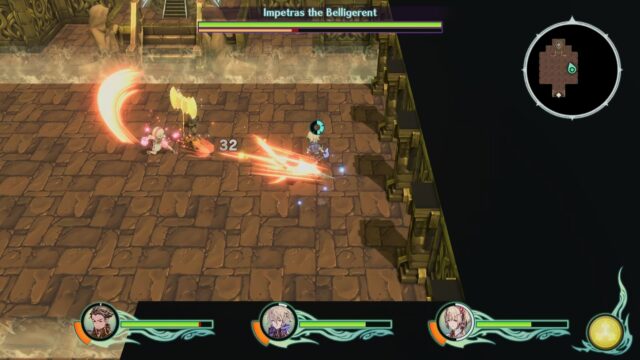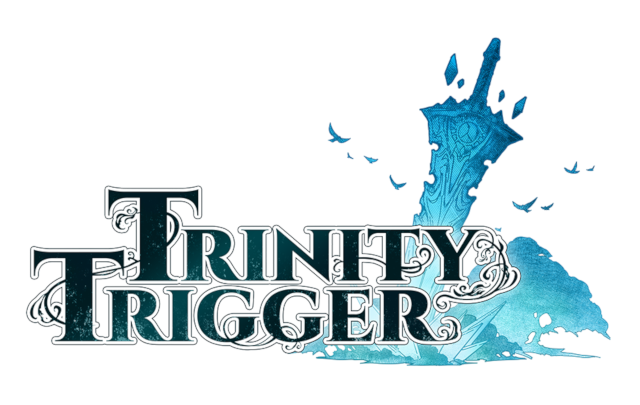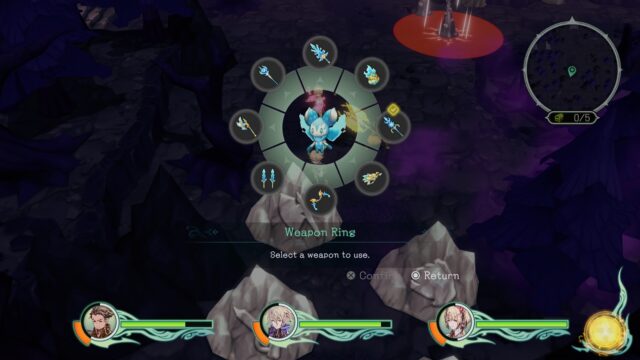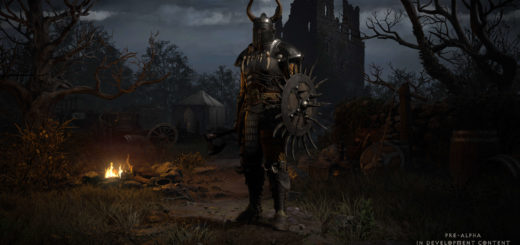Trinity Trigger Review
Action RPG 101
Although more attention is likely to be on 2023’s multiple powerhouses, the year has a bevvy of quality indie and mid-range titles. Looking to carve out its own base among them is Trinity Trigger. While developer FuRyu previously drew inspiration from SaGa for titles such as The Alliance Alive, Trinity Trigger instead takes a more Mana-like approach, with an action-based combat system, multiple weapons to unlock, and traditional level-ups. Trinity Trigger has many good qualities, with fun and accessible combat alongside an interesting story and fabulous pacing; however, these good aspects are viciously marred by foolish AI partners, obnoxious voice acting, mediocre music, and the lack of anything unique.
As its title suggests, Trinity Trigger revolves around a trio of playable characters. Cyan, Elise, and Zantis may appear to be an unlikely party at the outset, but the three are tied together in unexpected ways in a world that is a mix of medieval Europe and high fantasy with dashes of nearly modern technology. The story is interesting and does an excellent job pulling players through the nearly twenty-five hours of gameplay the title offers, but it has a lot of inconsistencies — for example, the motivation for Cyan leaving his hometown is assassins are after him, which almost never comes up again. Thankfully, a stellar localization smooths over many of the narrative’s rougher edges, and breathes life into protagonists and antagonists alike.
The story is also helped along by wonderful voice acting within cutscenes, but in an ongoing trend with Trinity Trigger, the voice acting is also a double-edged sword. Even the best voice direction can’t save the annoyingly repetitive battle cries each character gives incessantly during combat. To make matters worse, the rest of the sound design is equally unimpressive. The repetitive sound effects are enough to keep the game muted outside of story scenes.
Combat is where Trinity Trigger shines brightest. A clear love letter to the Mana series, combat can be entered freely with on-screen enemies, each of which has its own attack patterns and skills. With just one player, rotation between each of the three party members is a quick button press away, with local co-op allowing up to two additional players to take control of a character. Initially, each of the three playable characters is locked to a single weapon associated with their Trigger, a personified weapon. However, throughout the game, each unlocks eight total weapons, which can be swapped between at any time. Most monsters will have some weapon weaknesses and some weapon resistances, and these matter greatly; attacks at a weakness can deal damage in the thousands with resistances reducing it to single digits.
To balance the somewhat frenetic combat, each weapon has a different style of stamina meter. Once depleted, stamina needs to be recharged for the character to do meaningful damage again; trying to attack while a weapon’s stamina meter is fully empty is treated like a weapon resistance. Each weapon feels fully fleshed out, with its own personality and attack style, though ranged weapons do see the largest number of resistant enemies and overall have lower attack to make up for their less risky positioning away from enemies.
Challenging enemies, including all bosses, have an additional shield meter which must be fully removed before the enemy’s hit points can be reduced. Most of these enemies will have two to three specific weapon weaknesses that are uncovered through nominal trial and error and are well worth finding out; much like more generic enemy weaknesses, Triggers targeting a shield weakness do astronomically more damage to a foe. As the game progresses, the player will also unlock the ability to power up their weapons for a short period of time, as well as unleash special powerful attacks, which are perfect for knocking down enemy shields or for applying maximum damage while the shield is down. Hopping from weapon to weapon while dodging incoming attacks in the fluid and fast-paced feels incredibly satisfying, with many enemies changing their attack patterns as their shield is brought down. While the game only has a single difficulty, those struggling with overcoming certain foes can opt to restart a boss fight with its maximum shield gauge by 10%, up to a maximum of 50%.

Find the right combination of weapon to demolish a boss’ shield bar, or be prepared for extremely long fights
However, combat also isn’t without some tarnish. Both the main story and side quests lack any sort of indication at what level they should be undertaken, so it’s pretty easy to stumble into content that is not level-appropriate. Furthermore, some of the most crucial side quests — which involve unlocking some of the weapon variants for each of the party members — are buried in a huge, sprawling city. Elsewhere, the AI-controlled party members waffle wildly between competent, helpful party members and floor decorations requiring a resurrection after stumbling through large swaths of area of effect damage or environmental hazards. There’s simply a point where watching party members repeatedly bounce off cactus, ice spikes, damaging flowers, and other landmarks stops being funny and simply becomes vexing.
Beating up all those enemies gains the party experience and TP, which grant progression in slightly different ways. Experience contributes to leveling up each character, though any character currently knocked out or missing from the party (which happens frequently enough to be a little tiring) doesn’t gain any. Character levels are particularly important for the HP gain, as not all attacks can be guarded against or dodged. On the other hand, TP is used to power up each character’s Trigger, and can be freely assigned based on the player’s choosing. Each weapon has two opening attacks, two mid-combo attacks, and two combo completion attacks to power up. Available improvements generally consist of either pure attack, or a lesser amount of attack and some other bonus, such as the gun-type weapon’s attacks being able to ricochet off walls or spear-type attacks pushing enemies back. Fully powering up any individual attack will also reward a hefty stat bonus to that weapon, and balancing between keeping all weapons even, and thus being able to attack a variety of weaknesses, or specializing each character into a smaller number of weapons that deal far greater damage, is up to the player. Thankfully, neither answer is entirely right or wrong.
Players can further customize each of their party members by applying augments to each of their growing arsenal of weapons. Augments come in two flavours, attack and defence, with up to three attack and defence augments slots unlocked per weapon as the story progresses. Augments, such as stun resistance, can come in a variety of tiers, and can have up to three additional effects on them beyond the base benefit of the augment itself, such as an HP absorbing augment also increasing experience gained, critical strike benefits, and refilling a weapon’s stamina faster.
Crafting is the biggest side activity players can indulge in, and it’s worth taking the time to understand how it works. All enemies drop crafting materials, and many enemies have special drops that can only be acquired when defeated with the proper weapon — yet another way Trinity Trigger encourages players to mix up the types of equipment they use. Once players have the adequate materials, both consumable items and augments can be crafted. Recipes for both can be found by completing side quests or purchased from vendors as the party travels to new locations throughout the world. While some items and augments can be found in treasure chests or purchased in limited quantities, only by crafting can players accrue an adequate amount of augments with a full set of benefits. These are generally needed for the most challenging fights near the end of the game when status effects are liberally thrown around even by commonplace enemies, and being able to resist poison, stun, or other debilitating effects becomes absolutely mandatory.
Overall, Trinity Trigger is a game that could be fantastic. However, it ends up as a mixed bag through the terrible sound design and somewhat frustrating ally AI, and ultimately how much a player will enjoy it is predicated entirely on whether these factors are dealbreakers. For those willing to overlook these flaws, there’s a fun game waiting just underneath that manages to capture the ephemeral fun factor of the Mana series without being a slave to design decisions of old.
Disclosure: This review is based on a free copy of the game provided by the publisher.


Simple yet fun combat
High level of character customization
Ample reason to rotate between weapon types
Good story pacing
Voice acting is wonderful in cut scenes...
...and terrible everywhere else
AI party members rather stupid
Inconsistent plot
Nothing new to see here








Recent Comments